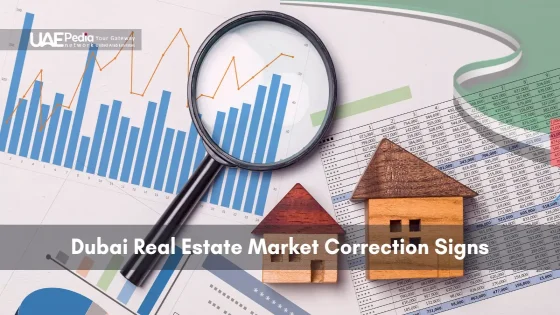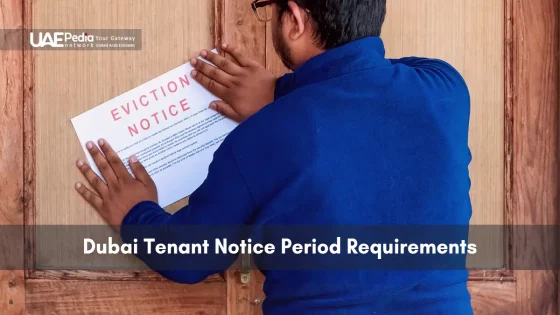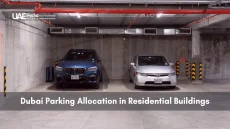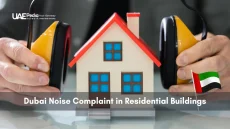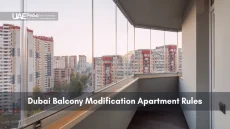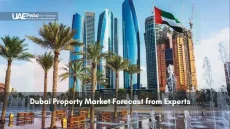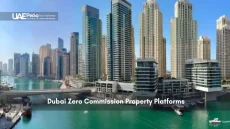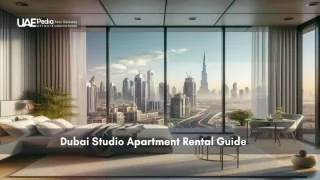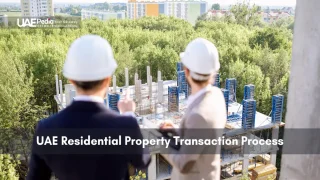What happens when 4,500 new millionaires move to a city in one year? The UAE’s property sector faces a fascinating paradox: soaring demand meets record supply. Fitch Ratings predicts a 10-15% price adjustment between 2025 and 2026—not a crash, but a strategic reset for savvy investors.
This shift isn’t about panic. It’s about patterns. Prime neighborhoods like Palm Jumeirah and Downtown Dubai continue defying gravity, while newer developments face pressure from 36 major projects launched in 2024 alone. Think of it as the market catching its breath after a three-year, 15% price sprint.
Understanding these signals matters whether you’re eyeing a beachfront villa or exploring real estate funds. The coming correction mirrors 2019’s soft reset—a chance to buy smarter, not just faster. We’ll unpack how rental yields, infrastructure spending, and global wealth migration shape this unique moment.
An influx of 4,500 millionaires in one year has driven Dubai’s property demand to record highs even as 36 major projects launched in 2024 flood the market with 150,000 new units. Fitch Ratings projects a 10–15% price adjustment between 2025 and 2026, characterizing the shift as a controlled market reset rather than a collapse. Core districts such as Palm Jumeirah and Downtown Dubai continue to outperform, sustaining 6–10% rental yields despite broader supply pressures.
Paragraph 2
Key indicators include new project launches exceeding the healthy 20–25 annual range (36 in Jan–Sep 2024), extended inventory absorption at 22 months, and average rental yields of 7.1%. These metrics echo the 2019 correction, offering a window for tactical acquisitions in prime assets and real estate funds. Monitoring off-plan sales structures, infrastructure spending, and residency-linked demand provides early warning of price inflection points and long-term resilience.
Key Takeaways:
- Fitch’s forecast reveals a planned slowdown, not sudden collapse
- Prime assets outperform during adjustments (6-10% yields hold steady)
- 2024’s $10B fund surge creates new entry points beyond direct ownership
Understanding Dubai Real Estate Market Correction Signs
Imagine adjusting your sails when the wind shifts—that’s how property adjustments work here. A market correction isn’t a storm, but a natural rhythm. Think of it as prices taking a coffee break after sprinting 15% higher since 2021.
Decoding the Reset Button
In local terms, a 10% price dip acts like a thermostat balancing supply and demand. Fitch’s recent analysis shows this isn’t panic—it’s developers and buyers finding new equilibrium. We saw similar patterns in 2019 when golden visa tweaks cooled speculative buying.
Your Early-Warning Dashboard
Watch these three gauges to spot shifts:
| Metric | Healthy Range | 2024 Snapshot |
|---|---|---|
| New Project Launches | 20-25/year | 36 (Jan-Sep) |
| Rental Yield % | 6-8% | 7.1% Avg |
| Inventory Absorption | 12-18 Months | 22 Months |
Notice how delivery timelines stretch when supply outpaces demand? That’s your cue. But prime areas still hum—Palm Jumeirah villas traded 8% higher last quarter despite broader trends.
Pro tip: Track off-plan sales. When developers offer post-handover payment plans, it whispers “we’re courting cautious buyers.” Combined with rising REIT listings, these signals help you read between the headlines.
Read More:
Market Overview and Recent Trends
Picture a rollercoaster climbing steadily for three years—that’s the property trajectory since 2022. Values jumped 60% through early 2025, with iconic towers now trading higher than their 2014 peaks. But here’s the twist: 2024 brought 36 major developments, enough to flood the pipeline with 150,000 fresh units.
Historical Price Movements and Asset Valuations
Let’s crunch numbers. Beachfront spots saw 22% annual jumps since 2022—outpacing global rivals like Miami. This table tells the story:
| Year | Avg Price (AED/sqf) | Annual Change |
|---|---|---|
| 2022 | 1,450 | +18% |
| 2023 | 1,720 | +19% |
| 2024 | 2,050 | +19% |
| 2025* | 2,320 | +13% |
Notice how growth stays positive but cools slightly? That’s the market maturing, not collapsing. Premium addresses still draw crowds—Palm Jumeirah penthouse bids recently topped 2014 records by 9%.
Shifts in Project Launches and Unit Deliveries
Developers aren’t hitting pause. This year’s 150,000-unit pipeline could double by 2026. But here’s the safety net: population growth chews through 25,000 homes annually. New hybrid communities—part residential, part coworking spaces—keep demand ticking.
We’re watching two forces collide: construction cranes dotting horizons meet 300,000 new residents expected by 2027. Smart money bets on neighborhoods blending live-work-play features, where prices grew 14% last year despite broader shifts.
Economic, Regulatory, and Global Influences
Think of global economic shifts as trade winds reshaping skylines. While oil prices still sway regional confidence (energy contributes 30% to UAE GDP), diversification drives now anchor stability. Fitch Ratings notes this blend creates “managed turbulence” – temporary dips that reward strategic positioning.
When Black Gold Meets Smart Policy
Brent crude’s rollercoaster impacts liquidity, not fundamentals. During 2020’s oil crash, developer payment plans evolved, creating today’s rent-to-own boom. Now, even at $80/barrel, 65% of buyers prioritize residency perks over short-term gains.
Visa Reforms: The Golden Ticket Effect
New entry rules act like social glue for investors. The 10-year golden visa and property-linked residency permits boosted foreign ownership by 18% since 2022. Retirees and digital nomads now account for 1 in 5 off-plan purchases.
Developers adapt too – hybrid towers blend coworking lounges with smart homes. One Jumeirah project offers yoga studios managed by AI concierges. As one analyst quips: “They’re not selling apartments, they’re selling lifestyles with visa benefits.”
These forces create a fascinating dance. Oil dips may slow cranes temporarily, but policy innovation keeps the music playing. For savvy players? It’s less about predicting storms than learning to sail in shifting breezes.
Supply and Demand Dynamics in Dubai’s Real Estate
Consider this urban math puzzle: 150,000 new homes hit the market in 2024 while 300,000 newcomers arrived. Developers keep launching towers faster than sandstorms sweep the desert—but does this spell trouble or opportunity?
Construction Boom Meets Buyer Needs
Builders delivered 36 major projects this year—double 2022’s pace. This table shows the gap between supply spikes and absorption rates:
| Metric | 2024 Data | Healthy Benchmark |
|---|---|---|
| Annual Housing Demand | 65,000 units | 55,000 units |
| Projected Deliveries | 150,000 units | 75,000 units |
| Population Growth | 8.3% YoY | 5% YoY |
Here’s the twist: 40% of new properties target luxury buyers, while families scramble for mid-range options. One developer confessed: “We’re building champagne towers in a lemonade market.”
Population Surge Fuels Essentials
Over 300,000 residents arrived last year—enough to fill 50 Burj Khalifas. Yet only 35% of new homes meet practical needs like schools and clinics nearby. This mismatch creates two markets:
- Luxury units lingering unsold for 9+ months
- Affordable complexes selling out in pre-construction
Smart investors now eye mixed-use hubs near metro lines. A recent JVC complex leased all 200 units in 48 hours—proof that location trumps marble countertops. As one broker quipped:
“The right address beats gold plating every time.”
While cranes dot the skyline, true demand hides in spreadsheets. Next, we’ll decode what top analysts predict for this high-stakes game of musical chairs.
Expert Forecasts and Investor Perspectives
What’s the secret handshake between analysts and smart money? Fitch Ratings paints a clear picture: “This adjustment resembles a pit stop, not a engine failure.” Their latest data shows banks trimmed property exposure to 22% of loans—down from 28% in 2022—while maintaining stable asset quality scores above 85%.
Insights from Fitch Ratings and Market Analysts
Top developers reveal 65% of 2024 projects hit 80% pre-sales before breaking ground. One industry leader told us: “We’re building chessboards, not checkers—every move anticipates 2026 demand.” This table shows why analysts remain bullish:
| Metric | 2024 Status | 2026 Projection |
|---|---|---|
| Bank Liquidity Ratio | 126% | 131% |
| REIT Dividend Yield | 5.8% | 6.3% |
| Cash Buyers (%) | 42% | 48% |
Investor Behavior and Long-Term Resilience Indicators
Smart money isn’t fleeing—it’s reshuffling. Seasoned players now blend trophy assets with income-generating townhouses. Diversification looks like this mix:
- 60% core residential holdings
- 25% commercial/retail
- 15% emerging suburban zones
One fund manager shared: “We treat short-term dips like seasonal sales—stock up on quality.” With 78% of surveyed investors planning 5+ year holds, the sector’s playing the long game. As data proves, strategic patience often beats timing the market.
Check out the below:
Strategic Positioning for a Shifting Property Landscape
Navigating property shifts is like mastering desert navigation—timing and tools matter. Smart money moves now blend patience with precision. Seasoned players split portfolios: 60% in established zones like Jumeirah, 40% in growth corridors near metro expansions. Think of it as planting date palms and olive trees together—diverse roots weather storms better.
Three moves separate trendriders from trendsetters. First: monitor ownership registration updates to spot emerging hotspots. Second: negotiate with builders during Q4 project launches—2024 saw 22% more flexible payment plans. Third: balance trophy assets with income-generating townhouses, mirroring institutional investors’ 5.8% yield targets.
Here’s your compass. Time entry points using population spikes (8.3% annual growth) against supply waves. Target areas where schools and clinics outpace luxury towers. And always—yes, always—factor residency perks into deals. Visa-linked purchases jumped 40% since 2022, proving golden tickets outshine short-term discounts.
Like a seasoned falconer reading wind patterns, let data guide your swoops. Track absorption rates, keep cash reserves for Q2 2025 opportunities, and remember—the best addresses aren’t just bought, they’re curated. Hungry for deeper insights? Our team’s fresh analysis on off-plan gems awaits at uaepedia.net.
A correction typically means prices drop 10%–20% from recent peaks due to oversupply, reduced demand, or economic shifts. In Dubai, this often aligns with global trends but is tempered by unique factors like investor visa incentives and tourism-driven demand.
Watch for rising inventory levels, longer listing periods, and developer payment plans (like post-handover schemes). Reports from CBRE and Reidin track average price declines per square foot, while rental yield compression hints at softening demand.
While Dubai’s economy is now diversified, oil volatility still affects regional investor confidence. The 2014–2016 dip slowed luxury purchases, but recent renewable energy investments and tourism growth help buffer against extreme swings.
Emerging zones like Dubai South or Jumeirah Village Circle often feel corrections first due to high new supply. Established areas like Palm Jumeirah and Downtown Dubai show more resilience, supported by premium demand and limited land availability.
Golden Visas and expanded investor categories (freelancers, retirees) create steady long-term demand. However, short-term speculators exiting during downturns can amplify price swings—a pattern seen during 2020’s pandemic dip.
Fitch Ratings notes developers offering aggressive payment terms (70% post-handover) to move off-plan inventory. Ready homes in walkable communities often hold value better, with buyers prioritizing immediate occupancy amid rising interest rates.
Diversify into income-generating assets like holiday rentals near Expo City or industrial/logistics hubs. Focus on areas with metro expansion plans (like Dubai Creek Harbour) or sustainable communities aligned with the UAE Net Zero 2050 initiative.
